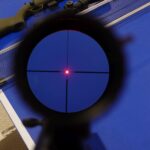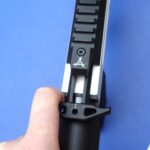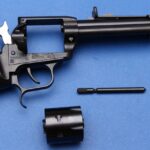Modern bolt action rifles are a modern day pleasure. Considering what people earn these days, an accurate bolt action rifle is much more within reach than it ever has been before. A new Remington 700 in 1962 would cost $115. That’s at a time when average monthly household income was $500. In 2012, the average household income is 10x that, and rifle prices are only 3-5 times more. Of course, now more computer controlled machining is involved, and rifles usually come with plastic composite stocks instead of nicely shaped wood ones, but they haven’t given anything up in their capability to hunt and shoot accurately. Combined with a tremendous amount of factory loadings available, you stand a great chance of finding a <1 MOA combination for your rifle.
With all this accuracy on tap, we should talk about how to sight in our rifles for long range hunting. Since most deer are still taken at about 100 yards, any long range solution can’t compromise our more common short range shots. I’d like to talk about 3 styles of scope adjustments for range, and what I think is the best way to sight in a scope for long range shooting.

Hold Over
The least technologically advanced way to adjust for distance is to “hold over” or hold the scope reticle over where you want to hit. If you were a machine gunner in a war, you might fire, observe impact, and adjust accordingly. But we’re not machine gunners, we’re hunters and this style of adjustment is only really useful in the 300-500 yard range. Anything closer and you don’t have to adjust, anything further and you probably can’t memorize the hold overs precisely enough. It’s hard to get into that 6″ kill zone if you’re estimating by feet.


Ballistic Reticles
A better solution to manual hold over is to use a scope with a ballistic reticle, a reticle that has been marked for set distances. Now, instead of eyeballing a spot on your reticle or guessing how many feet high you’re holding over, you set the “400 yard” reticle on the deer and fire as normal. No math, no drop tables to remember. All that you need is an estimated distance. Some ballistics reticles even help out with that, using common measurements from deer or fenceposts to help estimate range. Downsides? You really need to verify impacts to make this system work, it doesn’t do well with cartridges that are “in between” common cartridges or are using uncommon loadings, and they cost more than non-ballistic reticle scopes (usually $50-$100 more.) There are also tactical riflescopes inscribed with “mildots” that are a common standard, but they can be difficult to use as you need to pre-calculate drops for common yardages.

Turret Adjustments
The last method I wanted to mention was using a scope equipped with turrets. Turrets are externally accessible scope adjustments. Some are graduated for yardage in specific calibers, while others operate on standard MOA or MRAD. The whole idea is that you range the deer and then turn your turret to either an inscribed range for calibrated turrets or for a specified drop in mills or MOA, and then fire using the center reticle. It’s theoretically the most accurate but it also has the most moving parts and calculations. In practice, this solution not the most ideal for hunting. Turrets can get bumped off marks, they make your rifle slightly bulkier, and they invite additional complexity.
Sighting for MPBR
MPBR, or Maximum Point Blank Range, is a very practical way of sighting in a rifle so that you can do most shots up to about 300 yards without having to muck around with any of the above. Simply put, you set your scope so that you’re shooting very slightly up, just enough so that the bullet goes up an acceptable amount before dropping back down. This extends the distance that you can use the regular crosshairs and still hit in the vitals without having to think about any of the above. With most rifles, you can do a short range sight in at 20-ish yards, followed by a sight in at 100 yards. For most rifles, you’ll want the bullet hitting 2 or more inches high at 100 yards to squeeze out the most MPBR. To calculate the MPBR and 100 yard sight in values for your rifle, use this website.
Sighting for MPBR can be done with standard scopes, calculated and dialed in for turretted scopes, and is often a part of initial calibration required to use a scope with a ballistic reticle. What kind of difference can you expect if you set for Maximum Point Blank Range? Let’s compare a scope zero’d for 100 yards and that same scope set for MPBR. I’ll be using ballistics for a 270, and a vitals area of 6″.
Zero’d at 100 yards, a 270 will drop 3″ below point of aim by 200 yards and will be out of our 6″ circle of vitals.
Zero’d for 251 yards, a 270 will drop 3″ below point of aim by 291 yards and will be out of our 6″ circle of vitals.
So by sighting in a couple inches high at 100 yards, we added almost 100 yards of worry free range. That’s a HUGE difference, all things considered. So, do you have your rifle & scope set for MPBR?








